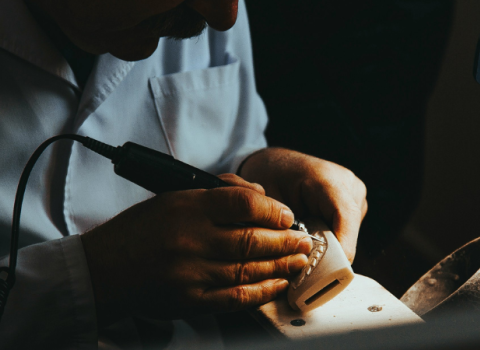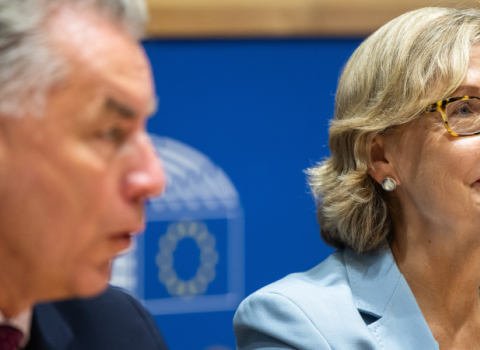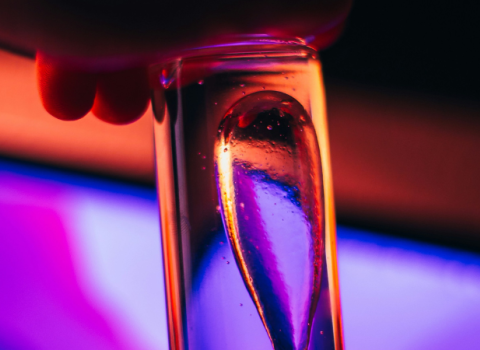A new state-of-the-art Cryo-Electron Microscope (Cryo-EM) facility that will advance the understanding of the processes of life has been officially opened.
The Midlands Regional Cryo-EM Facility is the result of a collaboration between the University of Warwick, Nottingham, Birmingham and Leicester, led by the University of Leicester. The universities are members of the Midlands Innovation partnership.
The total investment exceeds £6M with £3.7M from the Medical Research Council (MRC). The four partner Universities provided the remaining funds. The facility is centred around a state-of-the-art 300KV cryo-electron microscope, with the latest generation of direct electron-detecting cameras. Alongside this is the High Performance Image Processing Facility which boasts the state of the art computational infrastructure (based around powerful GPUs) necessary to process the very large (>1TB /day) amounts of data generated by these instruments.
A second “feeder” microscope based at the University of Warwick allows for the training of potential users who may be new to cryo electron microscopy techniques. The microscope provides an accessible route for optimisation of samples, prior to use at the new microscope facility. It delivers high quality images of purified proteins and cellular structures, and enables rapid acquisition of 3D images (tomograms) of biological samples - including viruses, bacteria and mammalian tissue. The University of Warwick site is used to train potential users who may be new to cryo electron microscopy techniques and allow them to develop pilot cryo-EM projects to the standard needed to benefit from the new high-end 300KV microscope in Leicester. The University of Warwick’s 200KV cryo transmission electron microscope is located in the Advanced Bioimaging Research Technology Platform within Warwick’s School of Life Sciences.
Dr Corinne Smith, Director of the Advanced Bioimaging Research Technology Platform at Warwick’s School of Life Sciences, said: “This is a really exciting opportunity to develop new high resolution structural biology projects - both at Warwick and within the Midlands CryoEM partnership - and to resolve previously challenging samples at near-atomic resolution detail.”
Professor Mohan Balasubramanian from Warwick Medical School added: “This is a brilliant development with far reaching potential. Warwick has already gained international recognition in advanced light microscopy and this state-of-the-art cryo-EM facility will synergize well and greatly strengthen our leading position in molecular and cellular structural biology."
Professor Robert Cross from Warwick Medical School commented: "The application of CryoEM for structural molecular cell biology has developed at break-neck speed over the last few years and the pace of change is, if anything, still accelerating. These two new microscopes are an indication of our commitment to advanced structural biology in WMS."
The facility in Leicester was opened today (10 April 2018) by Dr Richard Henderson, from the MRC Laboratory of Molecular Biology in Cambridge. Dr Henderson was one of three scientists to win the 2017 Nobel Prize in Chemistry ‘for developing cryo-electron microscopy for the high-resolution structure determination of biomolecules in solution.’ The revolution in cryo-electron microscopy has been driven by developments in the microscopes themselves, the camera systems, and in the computational methods used to process the images. This has allowed the latest generation of cryo-electron microscopes, such as the one in Leicester, to generate three dimensional structures of bio-molecules in exquisite detail. This enables scientists to understand the mechanisms through which molecular machines in our cells perform the key functions of life fit, leading to new understanding of disease processes and how best to address them.
Over the past four decades, European researchers – including MRC-funded researchers in the UK – have played a pivotal role in developing increasingly sophisticated and super-powerful cryo-electron microscopes. This microscope is one of several announced in July 2017, that were funded as part of £11.3m government funding to boost structural and cell biology research.
This release was first published 10 April 2018 by the University of Warwick.





 A unique international forum for public research organisations and companies to connect their external engagement with strategic interests around their R&D system.
A unique international forum for public research organisations and companies to connect their external engagement with strategic interests around their R&D system.